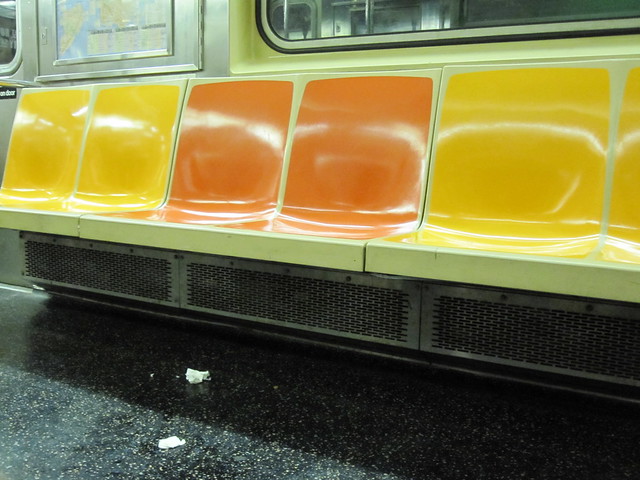 The MTA’s never-ending plans to bring wi-fi and cell phone service underground may soon be coming to a head. According to a PC Magazine report, the first stations to enjoy — or suffer through — cell signals may be outfitted before the year is out. Of course, international cities and even those a few hundred miles south will have long surpassed New York’s drive for not-so-cutting edge technology, but progress is progress nonetheless.
The MTA’s never-ending plans to bring wi-fi and cell phone service underground may soon be coming to a head. According to a PC Magazine report, the first stations to enjoy — or suffer through — cell signals may be outfitted before the year is out. Of course, international cities and even those a few hundred miles south will have long surpassed New York’s drive for not-so-cutting edge technology, but progress is progress nonetheless.
Sara Yin of the tech mag had a few scant details to report:
AT&T and T-Mobile customers will be the first to receive wireless Internet at select Manhattan subway stations as part of a pilot program launching late this year, the Metropolitan Transportation Authority (MTA) said.
Kevin Ortiz, a spokesman for the MTA, said contractor Transit Wireless will launch a pilot program “in the backend of this year” providing wireless connectivity at the five subway stations along the 14th Street corridor. These include: 14th and Broadway, 14th and Sixth Avenue, 14th and Eighth Avenue, 14th and Third Avenue, and 14th and First Avenue.
“We’ll give them an additional four years after that to outfit the rest of the system, assuming all goes well with the pilot,” Ortiz added.
For those who have watched this story progress since late 2007, this his hardly breaking news. Those stations — actually six because PC Magazine omitted the 23rd St. stop — have long been on the initial list of those slated for the cell service pilot. What is promising however is the MTA’s insistence that Transit Wireless will have to “outfit the rest of the system” before 2015 is over. Part of me wants to say that I’ll believe it when I see it, but right now, the countdown clocks are more of a reality than I ever expected them to be.
As this project moves forward, the debate will of course center around personal space and overall quiet vs. the cacophony of cell conversations. In Brooklyn, a few stops from my local station, the B and Q trains head aboveground, and cell phones are the norm. Usually, the conversations are quiet and respectful, but as I learned two weeks ago while waiting at Queensboro Plaza, those around you can have obnoxiously loud conversations at an elevated subway stop. For millions of New Yorkers who never venture to the open-air areas of the system, cell service underground will be a new experience.
Of course, as New York lumbers forward with what will optimistically be an eight-year plan to bring cell service underground, London expects that its Tube customers will be “checking their emails” by 2012. In a release published last week, Transport for London announced that it is soliciting bids from telecom providers who would wire the system’s 120 systems for wireless access in advance of next year’s Summer Olympics. Their system is older than ours and deeper, and yet, I’d imagine they’ll have cellular access underground before we do. Need I say more?
















 Over the past few years, I’ve often touched upon the idea that New York City is essentially giving away space for free. Despite wallet-busting rents, obscenely high taxes and a cost of living nearly unrivaled elsewhere in the country, the city has no problem turning over valuable street space to empty parked cars. It’s an ugly inefficient use of space.
Over the past few years, I’ve often touched upon the idea that New York City is essentially giving away space for free. Despite wallet-busting rents, obscenely high taxes and a cost of living nearly unrivaled elsewhere in the country, the city has no problem turning over valuable street space to empty parked cars. It’s an ugly inefficient use of space.